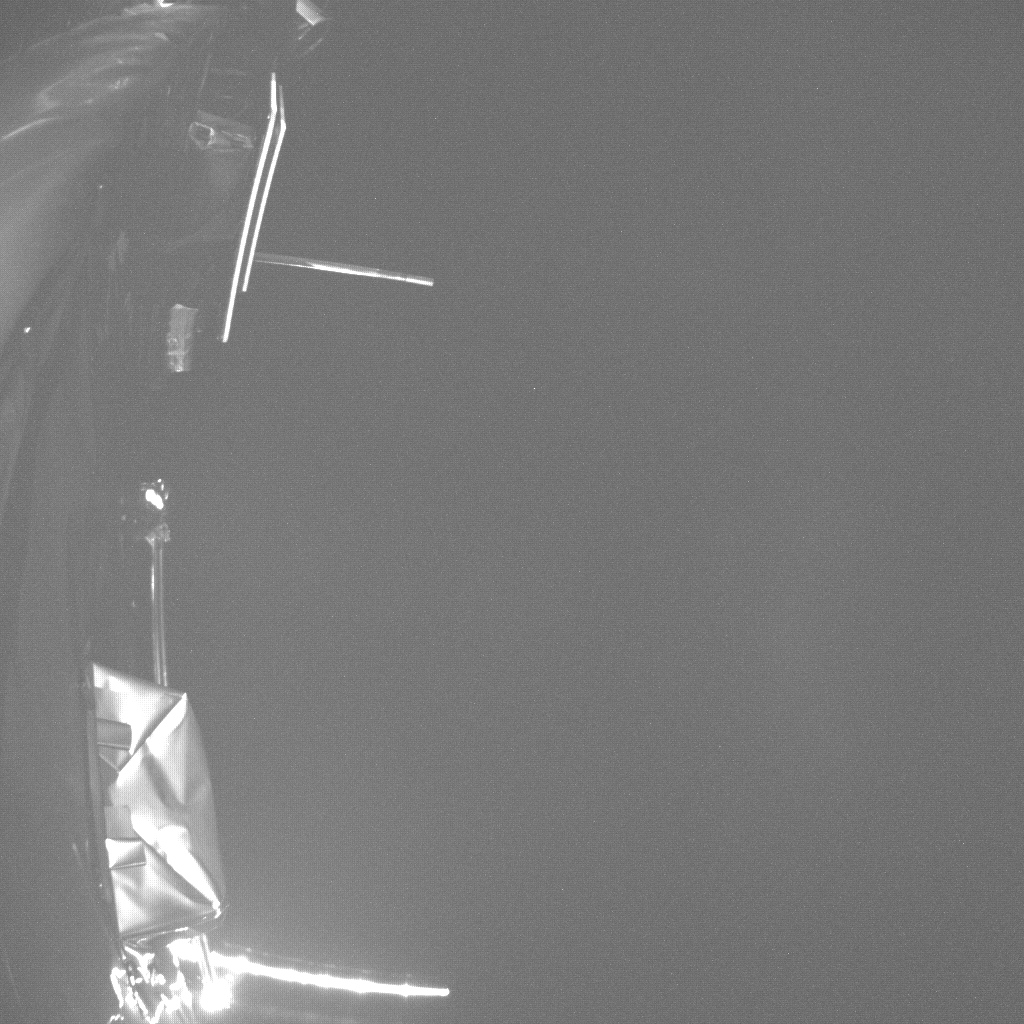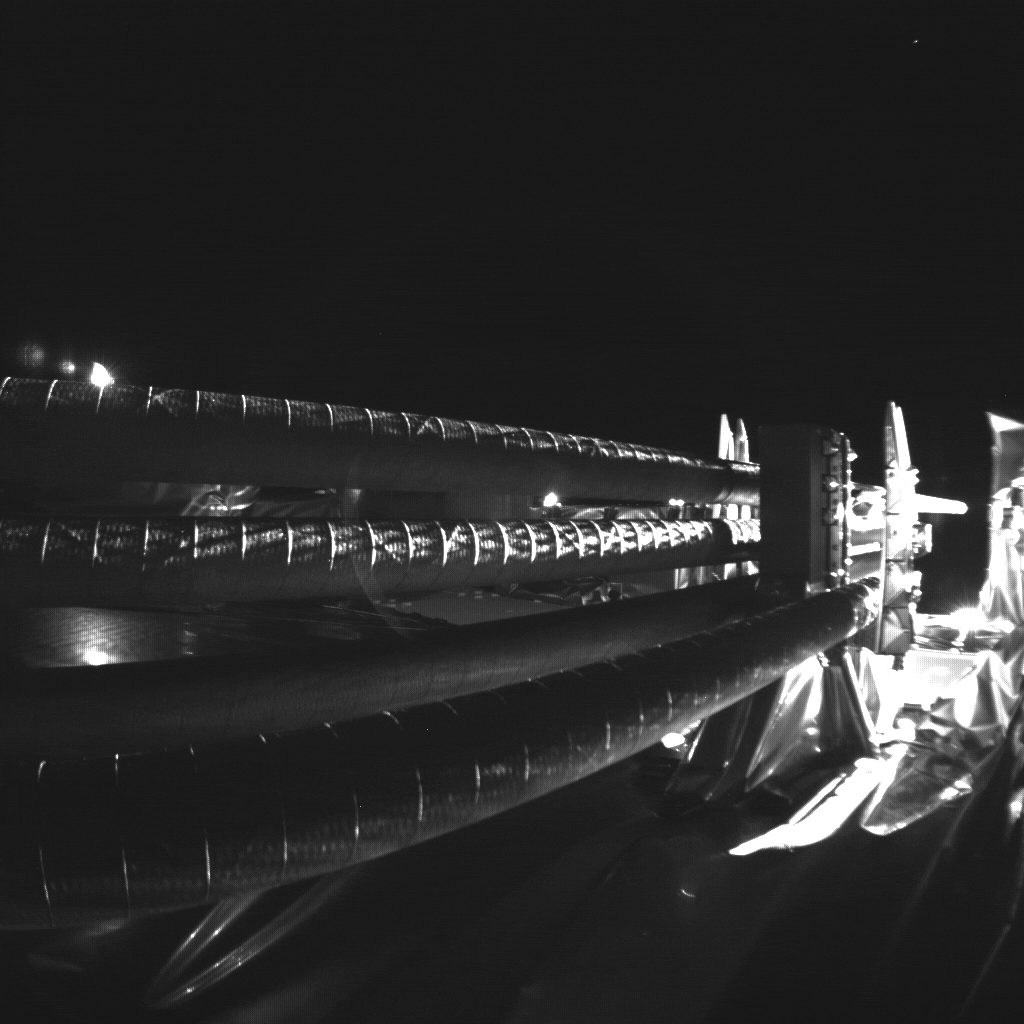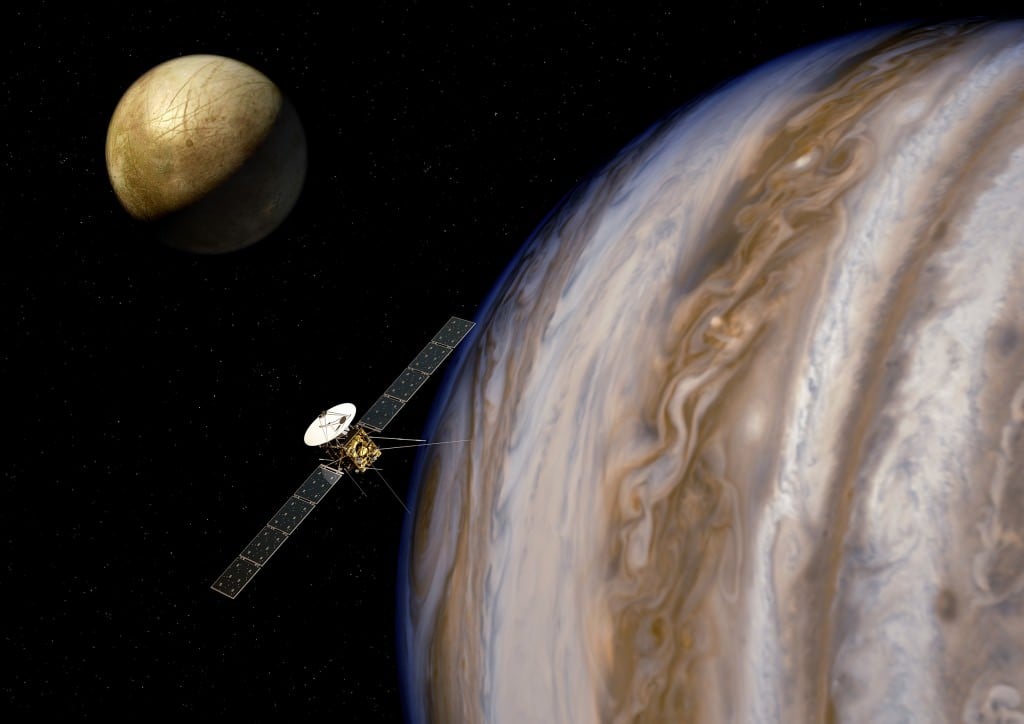ESA's Juice mission launched last month on April 14, beginning its long journey to explore Jupiter's icy moons, Ganymede, Europa, and Callisto. But soon after launch, mission controllers realized a 16-meter (52.5 ft)-long antenna for a radar instrument was jammed and couldn’t deploy. The Radar for Icy Moons Exploration (RIME) antenna is mission critical, as it gathers data for the instrument that will be able to map beneath the ice at these moons.
But, whew, the story has a happy ending. After nearly a month of efforts to free the stuck antenna, engineers figured out a fix for the RIME antenna. They fired a mechanical device in the jammed bracket, which created enough jiggling and rattling to allow the antenna to fully deploy.
When flight controllers first deployed the antenna, only the first segments of each side were extended. Engineers realized the antenna was stuck on a tiny pin. After studying the situation, they tried to shift the pin by shaking the spacecraft by a quick firing of its thrusters, but that didn't work. Then they hoped that direct, unfiltered sunlight hitting the antenna would warm it up and cause the pin to shift. But after days of waiting and hoping … nothing.
Fortunately, ESA said, the flight control teams at the mission control centre in Darmstadt had lots of ideas up their sleeves.
On May 12, flight controllers fired a mechanical device called a 'non-explosive actuator' located in the jammed bracket. This delivered a shock that moved the pin by a matter of millimeters and allowed the antenna to unfold.
The graph in the Tweet below shows the mechanical shock delivered by the firing of the actuator in the mounting bracket. The actuator was fired at the moment labelled 'NEA 6 Release'. The resulting damping oscillation indicates that the antenna is released and then wobbles back and forth before stabilizing into an extended, locked position.
?s=20Loading tweet...
— View on Twitter
But wait … still another part of the antenna was stuck. And so the flight control team fired another actuator in the bracket, causing RIME to fully stretch itself out after months spent folded up for launch.
Once ESA's Jupiter Icy Moons Explorer (Juice) arrives at Jupiter, it will use RIME to study the surface and subsurface structure of Jupiter's icy moons down to a depth of 9 km (5.5 miles). The instrument will perform radar sounding beneath the surfaces of these watery moons and send back data about each of their icy crusts. Juice's mission is to investigate the emergence of habitable worlds around gas giants, which will help in the understanding of how our Solar System formed.
The spacecraft won't reach Jupiter until January 2029, as it is not taking a direct route. An eight-year-long cruise will take it through four gravity-assist flybys past Earth and Venus, which will help slingshot the spacecraft toward Jupiter.
The spacecraft will perform 35 flyby approaches to Europa, Ganymede, and Callisto. RIME is one of ten instruments on board for remote sensing, geophysical studies, particle detectors, a magnetometer, and a radio and plasma wave detector.
 Universe Today
Universe Today


